Each
year four Cope Thunder (CT) exercises are held in Alaska, United States
of America (USA). One of these is known as Cooperative Cope Thunder
(CCT) and includes foreign participants while the other three focuses on
the joint integration of United States Air Forces (USAF) Air
Expeditionary Forces (AEF) with the US Navy, Marines and Army. All the
exercises are organised by Pacific Air Command (PACAF) and last for ten
days. Cope Thunder exercises were originally held at Clark Air Base
Philippines but moved to Eielson Air Force Base (AFB) after the erupting
of Mount Pinatubo in 1992. Also Elmendorf AFB is host to the
participants. On average 1.150 people and 80 aircraft are deployed of
which 60 planes and 900 personal will deploy to Eielson AFB with the
others being deployed at Elmendorf AFB. One other major exercise
‘Northern Edge’ is organised by Alaska Command. Elmendorf AFB is home to
USAF 3rd Wing (Wg) which consist of multiple squadrons flying Boeing
F-15C/D/E Eagle and Strike Eagles, Lockheed Martin C-130 Hercules, Beech
C-12 (Super) King Airs and Boeing E-3B/C Sentry aircraft. Eielson AFB is
home to the 354th Wg consisting of two squadrons equipped with
Fairchild-Republic OA/A-10A Warthogs and Lockheed Martin F-16C/D
Fighting Falcons.
Responsible within PACAF for the (Cooperative) Cope Thunder exercises is
the 353rd Combat Training Squadron (353 CTS). The unit is assigned to
the 11th Air Force, which has its headquarters at Elmendorf AFB. The 353
CTS itself is located at Eielson AFB and maintains a detachment at
Elmendorf AFB. 353 CTS manages the Pacific-Alaska Range complex, which
covers three areas consisting of 68.000 square miles of training air
space and 90.000 acres of land, making it the largest training range in
the USA. The ranges are equipped with the normal targets.
The goals for the exercise are twofold: first getting people from
foreign nations together and be able to operate together and second it’s
a great way to introduce people who haven’t seen some of the environment
get together and have mutual training objectives. As with all major
exercises, like Red Flag held at Nellis AFB Nevada and Maple Flag at
Cold Lake in Alberta Canada, opposition and offensive forces are engaged
in a war, based upon the scenario drawn up by the 353 CTS. This scenario
being the same as other major exercises seeing fictitious countries
getting into hostilities or war and allied forces responding as
peacekeeping forces. Controlling the air war and ensuring safety is the
responsibility of the white force. The aim of the exercise is just like
Red Flag and Maple Flag to provide aircrews with realistic training
missions. Aircrews surviving the first ten combat missions are more
likely to survive the rest of their combat sorties. Preparation for the
exercise starts 12 to 15 months prior. PACAF will determine which
countries they would like to invite as well as looking at the right mix
of players. Invitations are than sent out to allied and friendly
nations. Observers are also invited to join the exercise. Together with
Air Combat Command (ACC) the major exercises (CT, Red & Maple Flags
etc.) are deconflicted. A scenario is written which is presented to the
participants at the planning conference held during the first months of
the year.
Participants can ask for their specific training needs to be included
into the game plan. For each of the 19 missions flown during CCT mission
commander slots are available and each squadron can sign-up for these
slots. The scenario is than finalised. Somewhere during the summer, the
CCT isn’t held during the same period each year, the actual exercise
takes place. Each squadron will bring a mix of junior and more
experienced aircrews. The junior aircrews will get the change to fly
missions involving up to 70 aircraft. The senior aircrews who are
assigned a mission commander slot will be given the opportunity to
organise and plan a mission. Mission planning starts a day prior to the
flight date. The mission commander will draw up an overall tactic and
assign the assets he has available to his force to conduct his mission.
He staff of the 353 CTS, which can comment on his plan and make
suggestions to improve it, will assist him. Than a briefing will be held
for all the package commanders, a package consists of a number of
aircraft performing the same role for instance air to ground or tactical
or airlift. The packages commanders will than brief their own package.
On the day of the mission a mass brief will be held which off course
includes a briefing from the meteorological office.
Squadrons can arrive a week prior to CTT to get themselves acquainted
with local flying procedures, receive local safety and survival
briefings and make physical and metal preparations. Its also an
opportunity for them to have their pilots (re) qualified on certain
missions like flying in the mountains.
One of the highlights was the participation of the Indian Air Force
(IAF). It marked their first presence at CCT, although an Il-76 was
present last year. Their westbound deployment wasn’t unnoticed in Europe
and on the internet it kept people busy. After leaving India’s westcoast
the package comprising Jaguars, Il-76s and Il-78s headed for Qatar.
Other stops were made in Egypt, Italy, Portugal, Azores, Canada (3
stops) before finally reaching Eielson AFB. The Jaguars were brought for
the exercise because they will be operated within the IAF for some time
to come and have already been in service for a long time. The deployment
to the USA was a logistical challenge. During CCT one mission per day
was flown to get to known how this exercise is run. Each mission saw an
Il-78 take-off to support the Jaguars and an Il-76 to perform tactical
airlift.
The co-operation with the USAF started some years ago. Both countries
are learning from each other. Currently interaction between the two
nations takes places on different levels with at least flying
instructors being exchanged. The IAF would like to participate in a CCT
type exercise once a year. It might be that in the future they would
show up at a Red Flag or Maple Flag exercise. If the IAF deploys
westbound again remains to be seen as this was done as a logistical
exercise.
Other Asian countries to participate were Malaysia which sent a C-130
Hercules for the first time. Marking its second attendance in a row was
the Japanese Air Self Defence Force (JASDF). This time F-15 Eagles from
7 Kokudan (Air Wing) based at Hyakuri air base were deployed together
with a Boeing E-767 Awacs (in 50 years anniversary colours) from 601
Hikotai. Support for the F-15s was provided by USAF KC-135s. Attending
CCT offers the JSDAF an opportunity to improve their tactical skills. It
also offers them an environment with less restriction than in Japan.
PACAF also invites allied nation as observers to the exercise. As with
the actual exercise the goal is to learn from each other’s strengths. In
future it could be that a country would actually participate in a CCT.
The IAF attended several CCTs as observers before actually joining this
year. Bangladesh were one of the observing countries this year. The goal
for them is to learn how an exercise like CCT is run, learn how the
different countries work together and which procedures are used to make
air operations a success. Bangladesh contributes armed forces to the
United Nations for various peacekeeping programs throughout the world.
The lessons learned in Alaska are very valuable to them.
The future for Cooperative Cope Thunder looks bride. All participants
value the large amount of air space available for training. For the
Royal Air Force and German Air Force it is normal to operate together
and exchange information. CCT provided them the opportunity to train
with air forces they normally never fly with. The exercise will probably
not expand because currently the available ramp space is used. Also
availability of lodging in hotels is problem. Fairbanks hasn’t a lot of
hotels while those at Anchorage fill up with tourists in the summer.
However the 353rd CTS manages to offer a realistic 10 day exercise
fulfilling the training needs of both US forces as well as it’s allied
nations.
The author wishes to thanks all members of public affairs and
participating nations in their assistance with writing this article. |
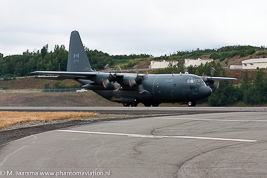 |
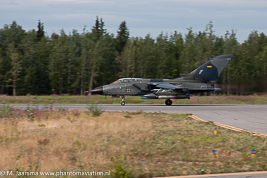 |
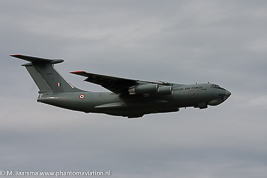 |
|
CC-130E Canadian Air Force landing at Elmendorf AFB. |
German Air Force Tornado departing Eielson AFB. |
Indian Air Force Il-76MD taking-off from Eielson
AFB. |
|
|
|
|
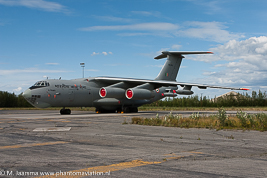 |
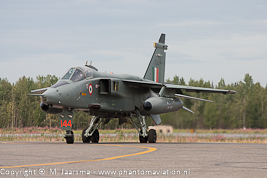 |
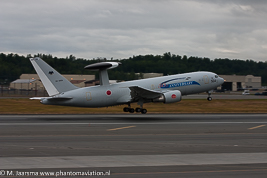 |
| An Indian Air Force
Il-78MKI sits at the ramp of Eielson AFB. |
Indian Air Force Jaguar S taxiing from the ramp
for take off at Eielson AFB. |
Japanese Air Self Defence Force E-767 'AWACS'. |
|
|
|
|
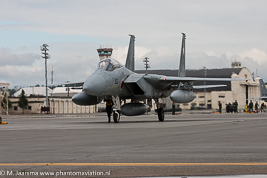 |
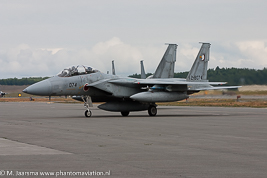 |
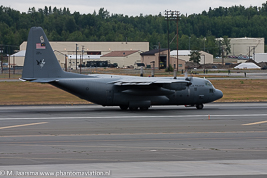 |
JASDF F-15J Eagle.
|
JASDF F-15DJ Eagle.
|
Malaysian Air Force C-130H Hercules |
|
|
|
|
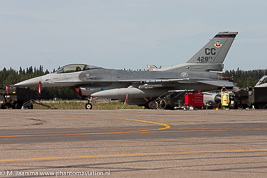 |
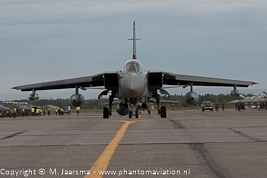 |
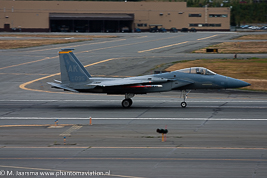 |
| F-16C 428th FS Commander
Singapore Air Force based at Cannon AFB. |
RAF Tornado GR.4 ready to depart for its
mission. |
F-15C Eagle from 12th FS returning from a
mission. |
|
|
|
|
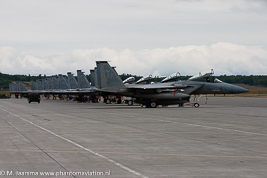 |
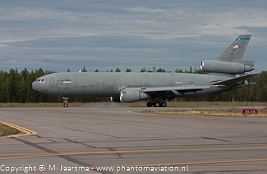 |
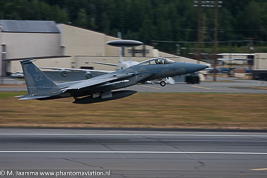 |
Ramp of 19th FS F-15C/D
Eagles.
|
32nd ARS / 305th AMW KC-10A providing AAR
operating from Eielson AFB. |
F-15C from 44th FS based at Kadena AB Japan
departing Elmendorf AFB. |
|
|
|
|
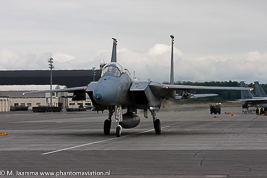 |
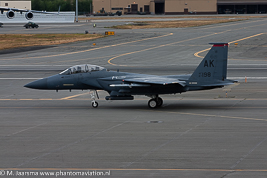 |
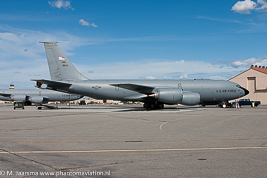 |
|
18th Wing participated with both its F-15C/D squadrons. F-15C from 67th
FS. |
3rd Wing, 90th FS F-15E Strike Eagle.
|
Eielson AFB based KC-135R 168th ARS Alaska ANG. |
|
|
|
|
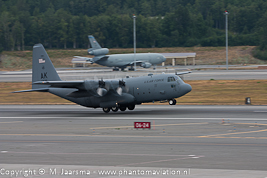 |
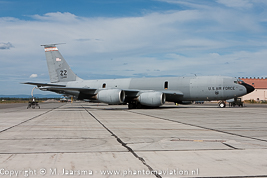 |
 |
|
The 517th AS participated with its C-130H Hercules. |
Operating together with their Alaska ANG
colleagues, 909th ARS KC-135s. |
US Navy F/A-18F Super Hornet from VFA 41 on the
ramp at Eielson AFB. |
| |
|
|
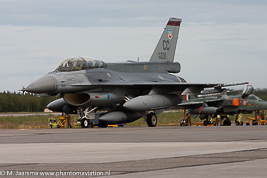 |
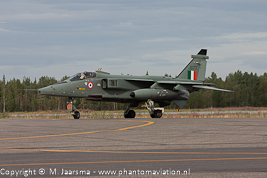 |
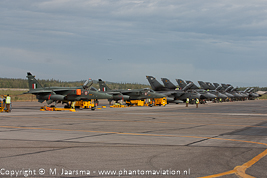 |
| F-16D Singapore Air Force
428th FS taxiing for a mission. |
Indian Air Force Jaguar S also taxxing for a
mission. |
Eielson AFV ramp with Indian Air Force Jaguars
and RAF Tornadoes. |
| |
|
|
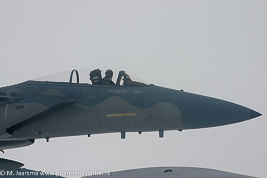 |
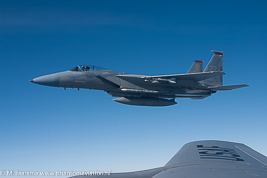 |
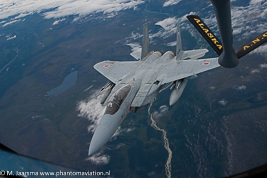 |
| Eagles from the 44th and
67th were the |
first receivers for the 168th ARS Alaska |
Japanese Air Self Defence Force F-15J |
| |
|
|
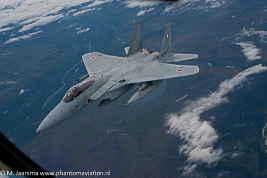 |
|
|
| leaving the KC-135R. |
|
|






























